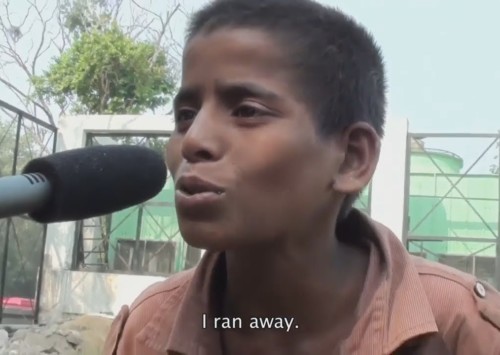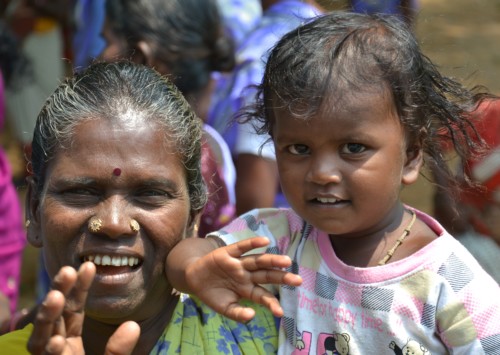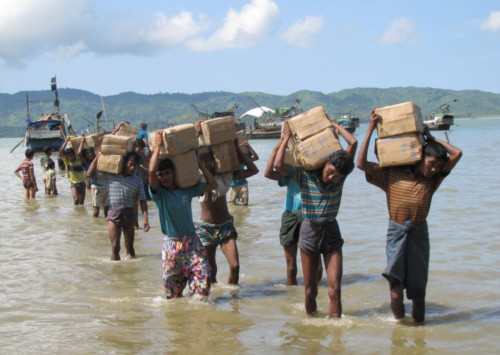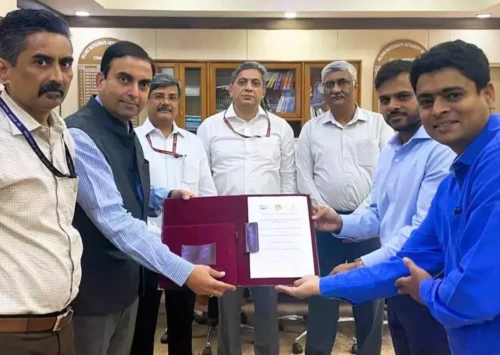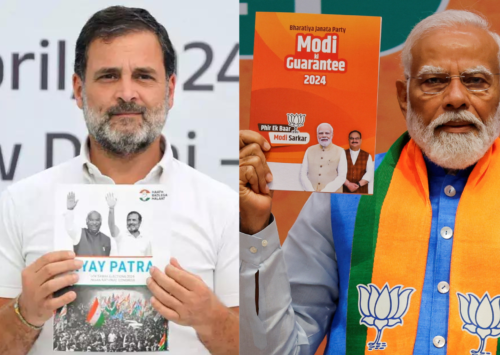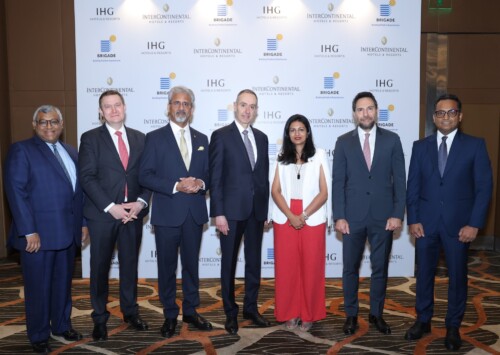Observing World Aids Day
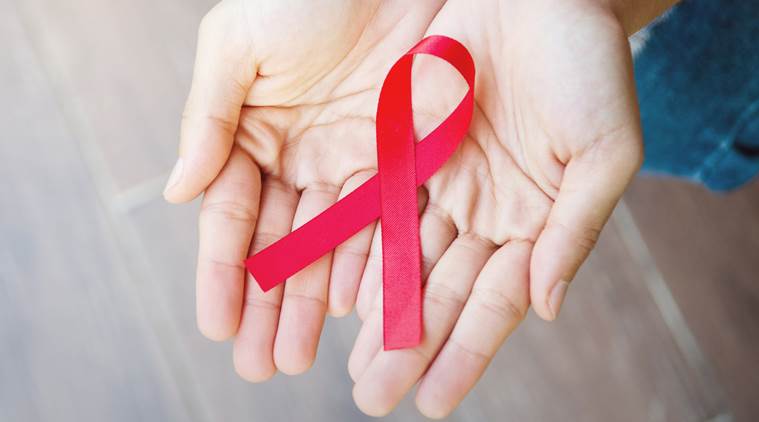
In 2016, 120,000 children under the age of 14 died of AIDS-related causes, and 18 children were infected with HIV every single hour
On World AIDS Day, we take an introspective look at India’s ailing reality while looking at numbers and taboos related to the immunodeficiency disease.
World AIDS Day, observed on December 1 every year since 1988, is dedicated to raising awareness about the Acquired Immune Deficiency Syndrome (AIDS) pandemic, caused by the spread of Human Immunodeficiency Virus (HIV) infection, and also for mourning those who have died of the disease. The disease alters the immune system, making people more vulnerable to infections and diseases. This susceptibility worsens as the syndrome progresses.
The virus can be transmitted through contact with infected blood, semen or vaginal fluids, during unprotected sex, pregnancy, and sharing of needles.
However, till date myths and misconceptions surround the disease, with some medical professionals denying medical care especially to the affected in the rural areas.
Let’s look at some facts and figures:
According to The Joint United Nations Programme on HIV and AIDS (UNAIDS), in 2016, India had 80,000 new HIV infections and 62,000 AIDS-related deaths. There were 2,100,000 people living with HIV in 2016, among whom 49 pc (40 pc – 61 pc) were accessing antiretroviral therapy (ATR).
The key populations most affected by HIV in India are sex workers with an HIV prevalence of 2.2 pc; gay men and other men who have sex with men, with an HIV prevalence of 4.3 pc; people who inject drugs via shared syringes, with an HIV prevalence of 9.9 pc; and transgender people with an HIV prevalence of 7.2 pc.
Shanaya*, a sex-worker from Kolkata’s (east India) largest red-light area, Sonagachi, shares, “In between an NGO started a project here, wherein we were provided condoms and aids preventive pills. However, that was short-lived. Even if we have access to condoms most of our customers refuse to wear them. At such, it makes it difficult for us, as we find no alternatives but to comply.”
It is being reported by the media since 2015 that sex workers at this particular red light district are set to receive HIV preventive medicines but how far along is the reality from the projected one?
A report from 2015 read, “One of the biggest red light areas in all of Asia, Sonagachi, is soon to become a testing ground for a feasibility project aimed to stem the increasing cases of HIV positive cases among sex workers. The project is to be launched in December and is being funded by Bill and Melinda Gates Foundation. The feasibility project was recently passed by National AIDS control Organization (NACO) and Union Health Ministry.”
“We recently gave clearance to this project. It is a feasibility project. It is for the first time that such a project is being taken up in India,” national program officer at NACO, BB Rewari, told PTI.
On February 7, 2017 a similar report by PTI surfaced. The report read, “One of Asia’s largest red light districts, Sonagachi will next month roll out an experimental project for providing HIV-preventive medicine to sex workers in what will be the first such initiative in the country. The feasibility project recently received clearance from the National AIDS Control Organisation (NACO) and Union Health Ministry and is likely to commence in December.”
The latter report states that it is a debut initiative to be adopted in the country, contradicting the previous report.
Shanaya says, “Every time they keep saying that there will be some project or the other, but sadly the ground reality is very different. No medical professionals want to give us medicines even if we muster the courage to seek medical advice at our own expense. It’s like we are fated to this. Several of us have been tested to be HIV positive and then there are those who had HIV positive kids, who too are denied medical advice.”
In India, myths and misconceptions related to the disease are not limited to one community.
In the rural areas, several cases of medical negligence and social shunning have been witnessed. On October 5, a 27-year-old HIV positive woman hanged herself from a pipe in Hyderabad’s (south India) Osmania General Hospital after being denied admission, which is provided for free under India’s National AIDS Control Programme (NACO).
In another incident last month, doctors declared a 24-year-old pregnant woman admitted to Tikamgarh district hospital in Madhya Pradesh (central India) a ‘human bomb’ after she tested positive for HIV. The confidential pathology report was leaked by the lab technician, and within hours, everybody from the doctor to the nurse and the ward boy refused to treat her. She finally delivered twins, who died within 30 minutes of birth, unattended on the ward floor.
In Uttar Pradesh’s (north India)Bareilly district last year, an HIV positive woman delivered a stillborn after a hospital in neighbouring Badaun refused to treat her because she didn’t have INR 2,000 (approximately EUR 26) to buy gloves for the hospital staff.
In April this year, the Parliament passed the HIV and AIDS (Prevention and Control) Bill, 2017, that guarantees equal rights in medical treatment, admission to educational institutions, and jobs, to people living with HIV/AIDS, but the Act is yet to be notified.
If an HIV positive patient is refused treatment at a government health facility, then the patient can move court, but the same doesn’t hold true for private hospitals till the Act is notified.
In other instances, HIV affected individuals were shunned from the community and sent into exile. Sapna*, a domestic help from a quaint village of West Bengal stated, “In my village, a couple was asked to leave their ancestral house after they were diagnosed with HIV in the state hospital. The state hospital immediately asked them to leave and so did the village elders; they refused to let them stay, fearing catching the disease.”
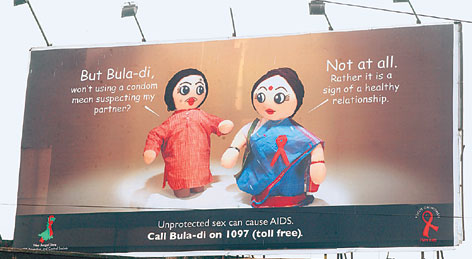
A popular campaign by West Bengal State AIDS Prevention and Control Society (WBSAPCS) featured Bula di, a friendly figure who dispensed knowledge on AIDS
A state doctor who refused to be named, stated, “Sensitisation is the key. People need to be educated about AIDS to break away from myths. It is funny how even doctors fear the disease and hence refuse patients. The only option here is to run regular awareness campaigns starting from a grass-root level. Once the fear is instilled in someone, it is difficult to get rid of it. So we need to nip the fear at the bud.”
On the occasion of World AIDS Day, union minister Anupriya Patel, launched the National Strategic Plan 2017-24, aimed at eradicating HIV/AIDS by 2030 and said it is still a big challenge to trace and bring people under ART.
She also inaugurated the SAMPARK mission aimed at tracing those who are HIV positive and are to be brought under ART services.
*name changed to protect identity

